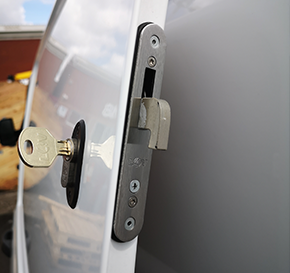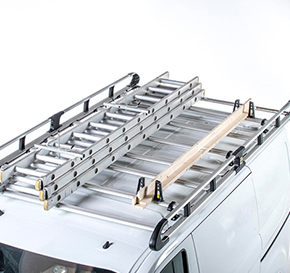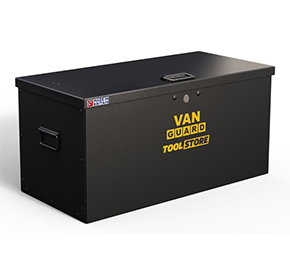When the temperature drops, one of the most common frustrations for van owners is frozen van security locks. Understanding how to prevent van locks freezing in winter can save you time, stress, and potential damage to your vehicle. In this article, we’ll explain why van locks freeze, how to stop it from happening, and what you can safely do if your van lock is already frozen.
Why Van Locks Freeze and How to Prevent Van Locks Freezing in Winter
Van security locks work in a similar way to the lock on your front door. Inside, there are small metal pins and springs that align when you insert your key. When everything is clean and dry, the mechanism works smoothly. However, moisture can easily get into the lock cylinder. When the temperature drops below zero, that moisture turns into ice, blocking the movement of the pins.
Unlike house doors, your van is exposed to the elements every day. The constant motion of driving, vibration, and temperature changes create more opportunities for water to enter the locking mechanism. Even tiny gaps or worn seals can let in condensation or rainwater, which later freezes. The key to preventing van locks freezing in winter is simple maintenance and care.
How to Prevent Van Locks from Freezing in Winter
Prevention is always easier than fixing a frozen van lock. Here are the best ways to keep your van locks working properly through cold weather.
1. Regular Van Lock Maintenance
The most effective way to prevent frozen van locks is by keeping them clean and lubricated. Dust, salt, and moisture can accumulate in the mechanism, increasing the chance of freezing.
Make it a habit to clean your van locks before the cold season begins. Use a soft brush or a can of compressed air to remove dirt from the keyhole. After cleaning, apply a lubricant designed for cold weather use, such as PTFE (Polytetrafluoroethylene), silicone spray, or graphite spray.
2. Best Lubricants to Protect Van Locks and Stop Them Freezing
Lubricants like PTFE sprays, silicone sprays, and graphite powders work by creating a thin, protective layer inside the van lock. This layer repels moisture and prevents water from staying in the mechanism long enough to freeze.
- PTFE spray – known for its low friction and water-repelling properties. It doesn’t freeze, even in extreme cold, and keeps the key turning smoothly.
- Silicone spray – creates a waterproof coating that prevents moisture from entering. It’s safe for most materials, including rubber and metal.
- Graphite lubricant – a dry powder that doesn’t attract dust or dirt, ideal for keeping van security locks functional in freezing temperatures.

All of these products help push moisture out and prevent freezing, but you should avoid WD-40.
3. WD-40 vs. Van Security Lubricants – Why It Won’t Prevent Van Locks Freezing
WD-40 is a common household product, but it’s not suitable for van locks in winter. While it does remove moisture at first, it leaves behind an oily residue that attracts dirt and dust. Over time, that residue thickens and can actually trap moisture inside the lock. In freezing weather, this makes the problem worse.
If you’ve already used WD-40, it’s best to clean the van lock with a contact cleaner or brake cleaner before applying PTFE or silicone spray.
4. How Often to Lubricate Van Locks in Winter
Lubricating once before winter starts isn’t enough. The effects of rain, snow, and road salt can reduce the protection over time. Reapply PTFE or silicone spray every few weeks during the cold months. If you wash your van often, apply lubricant again after washing, as water and cleaning agents can remove the coating.
What to Do If Your Van Lock Is Frozen
Even with the best care, a sudden freeze can still catch you by surprise. If your van lock is already frozen, don’t panic. Here’s how to handle it safely.
1. Use a Professional Van Lock De-Icer
Lock de-icers are designed specifically to melt ice inside van locks without causing damage. They usually contain alcohol or other antifreeze agents that quickly dissolve ice. Keep a small bottle in your glovebox or coat pocket (never inside the van) so you can access it when needed.
Apply the de-icer directly into the keyhole and wait a few seconds before trying to insert the key. Gently turn it — don’t force it, as you could break the key inside.
2. Warm the Key Before Unlocking Frozen Van Locks
If you don’t have a de-icer, you can gently warm your key before inserting it. Hold the key near a lighter or use a pocket heater for a few seconds. The small amount of heat will help melt the ice inside the van lock. Be cautious — do not overheat the key, as excessive heat can damage the key or the mechanism.
3. Thaw a Frozen Van Lock Safely with a Hair Dryer or Heater
If the situation is more serious, a hair dryer or portable heater can help. Blow warm air towards the van lock from a safe distance — at least 30–40 cm away — to avoid damaging paint or plastic parts. Move the warm air around to distribute heat evenly.
Avoid holding the dryer or heater too close. Concentrated heat can crack paint, warp plastic, or cause condensation that will later refreeze.
4. Why You Should Never Pour Boiling Water on Van Locks
It might sound like a quick fix, but pouring hot water over the van lock is one of the worst things you can do. The sudden temperature change can damage the metal, seals, and paint. Moreover, when the water cools, it can refreeze inside the mechanism, making things even worse.
After Thawing: Maintain and Prevent Van Locks Freezing Again
Once you’ve managed to unfreeze the van lock, take a few extra steps to prevent it from happening again.
- Dry the van lock completely. Use a soft cloth or tissue to remove any visible moisture.
- Apply PTFE or silicone spray to expel remaining water and form a protective barrier.
- Repeat the treatment for several days after thawing, especially if temperatures stay low.
- Store the van under cover whenever possible to reduce exposure to rain or snow.
These simple actions ensure your van locks remain dry and functional throughout the season.
Extra Winter Tips for Van Owners to Prevent Van Locks Freezing
- Clean around handles and keyholes regularly — dirt and salt can trap moisture.
- Check door alignment — if the door doesn’t close properly, gaps can let in water.
- Use car covers or windscreen protectors to shield van locks from direct frost.
- Avoid using car washes in sub-zero temperatures — the water can freeze instantly in the locks.
- Use rubber conditioner on door seals to stop them from sticking to the frame.
Frequently Asked Questions About Van Locks Freezing
Can I use WD-40 if that’s all I have?
No. WD-40 may seem to help temporarily, but it leaves residue that attracts dirt and traps water, increasing the risk of freezing later.
How often should I lubricate my van locks in winter?
Ideally every 2–3 weeks, or after every wash. Consistent maintenance prevents water from staying inside the mechanism.
Is PTFE spray better than silicone spray for van locks?
Both work well. PTFE offers superior lubrication for moving parts, while silicone provides better water resistance. Many van owners use both — PTFE for the internal parts, and silicone around the keyhole and seals.
What’s the best emergency method if my van lock is frozen and I’m stuck?
Use a lock de-icer if you have one. If not, gently warm the key or use a hair dryer from a distance. Never use boiling water.
Can I prevent van locks freezing completely?
With regular maintenance and proper products, you can reduce the risk almost entirely. No method is 100% foolproof, but consistent care keeps you one step ahead.
Conclusion: Keep Your Van Locks Protected This Winter
Knowing how to prevent van locks freezing in winter can make a big difference to your daily routine. The key lies in regular care, using the right lubricants, and avoiding harmful quick fixes. Products like PTFE and silicone sprays are inexpensive, widely available, and highly effective when used correctly.
By taking a few minutes every few weeks to maintain your van locks, you’ll save yourself from cold mornings, broken keys, and costly repairs. Stay prepared, keep your van secure, and let winter do its worst — your locks will be ready.
Follow us on our Facebook or Instagram, where we regularly share practical tips and advice on keeping your van security locks in top condition.










